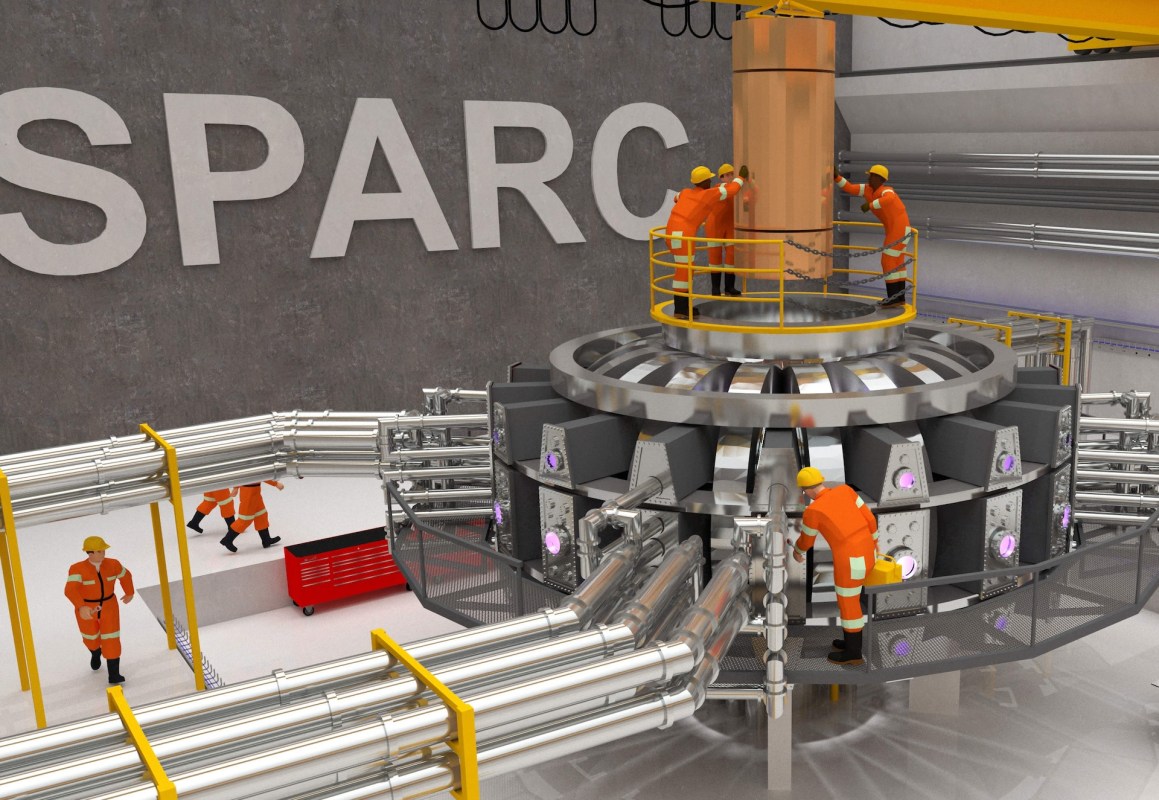An advancement straight out of science fiction has landed one company on a list of 15 "climate tech companies to watch" in 2023.
Commonwealth Fusion Systems is working on a fusion reactor to produce clean, carbon-pollution-free electricity that could be the future of sustainable power.
As MIT Technology Review detailed, the technology utilizes a "tokamak," a device that heats up isotopes of hydrogen using radio waves to extremely high temperatures in the region of 180 million degrees Fahrenheit.
It all happens in a donut-shaped system, and the plasma produced from the process is then squeezed by a magnetic field that fuses the atoms until energetic electrons and neutrons are released, per the news outlet, which also shared its news on X (formerly known as Twitter).
Commonwealth Fusion Systems has made measurable progress toward its goal of building a practical fusion reactor that generates carbon-free electricity.
— MIT Technology Review (@techreview) October 20, 2023
Our editors named it one of this year's 15 Climate Tech Companies to Watch. https://t.co/xxp9XXDJ98
According to the Review, the heat produced from the fusion reaction will be used to spin turbines to create energy.
It sounds like a promising solution for the world's increasing power requirements, and it could eventually herald the end of polluting dirty fuel that is responsible for increasing global temperatures. MIT Technology Review even called it a "sci-fi dream."
Protect your immune system and boost your hydration with this tasty electrolyte blend Nuun hydration tablets help you create healthy, active habits with clean ingredients tailored to your lifestyle. Nuun Sport easily mixes with water for a hydrating beverage to power you through your next workout, while a daily dose of Nuun Immunity is a quick addition to any self-care routine. These tablets are certified vegan and gluten-free, and you can even pick zero-sugar flavors. Keep a Nuun tube in your car, purse, carry-on luggage, or anywhere you'll want a healthy, restorative drink. Learn more → |
But, as it stands, the technology comes with a few notable drawbacks, as described by the Review. First, it's very expensive, with the $2 billion in funding the company has acquired expected to be mostly or fully used for the prototype.
Next, Commonwealth's process has not delivered enough energy to cover what's needed to power the system in the first place. Other, larger fusion projects are hard at work on this challenge elsewhere.
Furthermore, the tokamak (a design that has precedent elsewhere) is one of the smallest ever produced, and the reactor needs about 6,200 miles of high-temperature superconductor tape, which is a significant drain on resources.
The tape is used for the powerful electromagnets required in the process, but it's not even guaranteed the magnets will work as expected and still need to be cooled to -200 degrees Celsius (about -328 degrees Fahrenheit).
TCD Picks » Upway Spotlight
💡Upway makes it easy to find discounts of up to 60% on premium e-bike brands
More work is needed to bring this technology into the mainstream, but the possibilities are tantalizing.
MIT Technology Review said the company's SPARC reactor could produce its first plasma by 2025, but a "commercial reactor is still nearly 10 years away."
Meanwhile, 2026 may be the most important year for the technology's future. That's when Commonwealth Fusion System believes it will generate its first net energy gain, in which up to 100 megawatts of fusion power could be created.
Join our free newsletter for weekly updates on the coolest innovations improving our lives and saving our planet.















